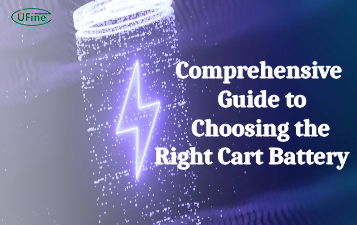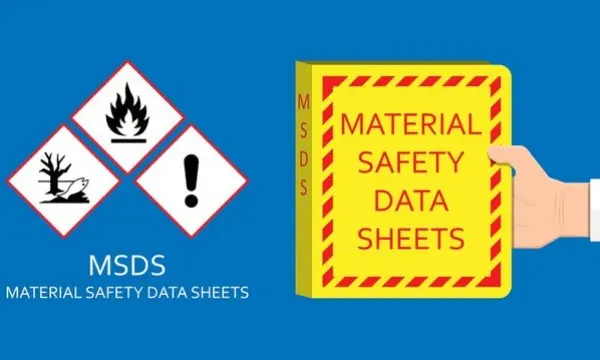What is a battery MSDS? This article discusses the significance of Material Safety Data Sheets for batteries, exploring their contents and format and why they are essential in ensuring safety and compliance in handling battery products.
Part 1. What is MSDS?
An MSDS, or Material Safety Data Sheet, is a document that provides vital information about the properties and hazards of a substance or product. It includes chemical composition, physical characteristics, and potential health effects. MSDS sheets ensure the safe handling, storage, and disposal of chemicals in various settings, from workplaces to households.
Part 2. Why does the Lithium battery need an MSDS certificate?
Why Lithium Battery MSDS?
Lithium batteries require an MSDS certificate due to the potential hazards and risks associated with their use and handling. These batteries contain reactive lithium metal and flammable electrolytes, making them prone to thermal runaway, fire, and explosion under certain conditions. Given these risks, various regulations and standards mandate the provision of MSDS for substances or products posing such hazards.
MSDS Content for Lithium Batteries
The MSDS for lithium batteries contains comprehensive information about their chemical composition, physical characteristics, potential hazards, safe handling procedures, and emergency response measures. This information is essential for users, handlers, and emergency responders to understand the risks associated with lithium batteries and take appropriate precautions to prevent accidents and injuries.
Regulatory Compliance and Transport
In many jurisdictions, compliance with occupational safety and health regulations requires providing MSDS documentation for hazardous substances, including lithium batteries. Additionally, transportation authorities often require MSDS documentation for lithium batteries to ensure safe transport and handling during shipping or air travel.
Safety Promotion and Risk Reduction
Obtaining an MSDS certificate for lithium batteries ensures compliance with legal requirements. It promotes safety in their use, storage, and transportation. By providing vital information about the hazards and proper handling procedures, MSDS documentation is crucial in preventing accidents and minimizing the potential risks associated with lithium batteries.
Part 3. Contents of a battery MSDS
Chemical Composition
- Description of Chemical Components: This section provides an overview of the chemical composition of battery products. It includes information on the primary chemical components in batteries, such as lithium, nickel, cadmium, lead, sulfuric acid, and electrolytes.
- Key Ingredients and Materials: The MSDS highlights critical ingredients and materials used in battery construction. It specifies the types and quantities of chemicals in the battery, including any hazardous substances that may pose risks to human health or the environment.
Safety Information
- Handling Safety: This section provides safety information related to the handling of batteries. It outlines best practices for safely transporting, storing, and handling batteries to minimize the risk of accidents, spills, or exposure to hazardous materials.
- Storage Precautions: The MSDS discusses storage precautions to prevent fires, leaks, or other battery-related hazards. It includes recommendations for storing batteries in a cool, dry, well-ventilated area away from heat sources, flammable materials, or incompatible substances.
- Disposal Procedures: This section outlines proper disposal procedures for batteries at the end of their life cycle. It includes information on recycling options, disposal regulations, and environmental considerations to minimize the impact of battery waste on the environment.
- Emergency Procedures: The MSDS guides emergency procedures during accidents, spills, or exposure to battery materials. It includes instructions for responding to fires, leaks, or chemical exposure and recommendations for personal protective equipment and emergency contacts.
Part 4. Format and Structure of Battery MSDS
Title and Identification
The MSDS typically begins with a title that identifies it as a Material Safety Data Sheet for a specific type of battery. Information identifying the manufacturer or supplier of the battery, along with any relevant product codes or identifiers, follows this section.
Table of Contents
Many MSDS documents include a table of contents at the beginning, outlining the sections and subsections covered in the document. Providing a table of contents helps users navigate the document more efficiently.
Section 1
Chemical Product and Company Information: This section provides details about the battery, such as its chemical composition, product name, manufacturer’s name, address, and emergency contact information.
Section 2
Hazards Identification: Here, potential hazards associated with the battery are listed, including physical, health, and environmental risks. This section also provides information on any hazardous ingredients present in the battery.
Section 3
Composition/Information on Ingredients: This section details the battery’s chemical composition, including the names and concentrations of any hazardous ingredients. It may also specify any non-hazardous components.
Section 4
First Aid Measures: This section outlines instructions for providing first aid in case of exposure to the battery. It includes information on the appropriate response to ingestion, inhalation, skin contact, and eye contact with the battery or its contents.
Section 5
Fire-fighting Measures: This section details appropriate fire-fighting measures and extinguishing agents for fires involving the battery. This section also includes information on any hazards that may arise from battery fires, such as releasing toxic gases.
Section 6
Accidental Release Measures: This section outlines instructions for containing and cleaning up spills or leaks in the battery. It includes recommendations for personal protective equipment and containment procedures.
Section 7
Handling and Storage: This section offers guidelines for safely handling and storing the battery, including information on proper handling procedures, storage conditions, and compatibility with other substances.
Section 8
Exposure Controls/Personal Protection: This section specifies recommended exposure limits for the battery and guides appropriate personal protective equipment to minimize exposure risks.
Section 9
Physical and Chemical Properties: Details on the physical and chemical properties of the battery, such as appearance, odor, pH, and solubility, are outlined here.
Section 10
Stability and Reactivity: This section provides information regarding the battery’s stability and reactivity, including details on any conditions or substances that may lead to its decomposition or reaction.
Section 11
Toxicological Information: This section contains information on the toxicological effects of the battery, including acute and chronic health hazards, exposure limits, and routes of exposure.
Section 12
Ecological Information: Details on the environmental impact of the battery, including its potential effects on aquatic and terrestrial organisms, are provided here.
Section 13
Disposal Considerations: Guidelines for the safe disposal of the battery, including any special disposal requirements or regulations, are outlined in this section.
Section 14
Transport Information: This section provides information on the battery’s transportation, including any applicable regulations or restrictions.
Section 15
Regulatory Information: This section contains information on relevant regulations and regulatory agencies governing the battery, along with any certifications or compliance statements.
Section 16
Other Information: This section may include any additional information relevant to the battery, such as handling precautions, storage recommendations, or manufacturer contact information.
Appendices
Some MSDS documents include appendices with supplementary information, such as reference tables, glossaries, or additional hazard data.
Related Tags:
More Articles

Comprehensive Guide to Choosing the Right Cart Battery
Choosing the right cart battery ensures optimal performance and longevity. This guide covers cart battery types and helps you make an informed choice.
The Ultimate Guide to 18650 Button Top Battery
18650 button top batteries are popular for their high energy density and reliability. This guide covers their key features, usage, and maintenance tips.
The Power of Slim: Unveiling the Potential of Flat Lithium Ion Battery
Flat lithium-ion batteries power devices from phones to vehicles. This article explores their design, benefits, types, applications, charging, and safety.
The Comprehensive Guide to Battery Balancing and Battery Balancer
Battery balancing and balancers optimize performance, longevity, and safety. This guide covers techniques and tips for choosing the right balancer.
10 Key Facts About Drone Battery for 2024
Uncover crucial insights with "10 Key Facts About Drone Battery for 2024." Learn the latest trends and essential details on drone batteries.




